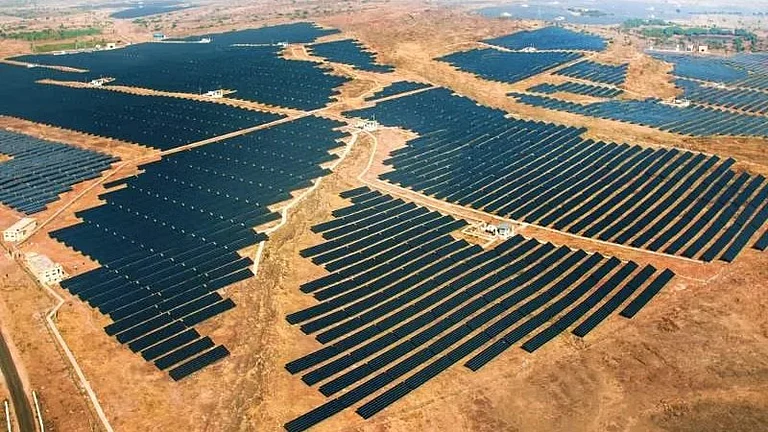The ‘oversight’ fiasco over interest rate in small savings schemes has triggered confusion among small and retail investors across the country. The confusion was created with the government announcing a steep 1.1 per cent cut in interest rate in various small savings schemes late Wednesday evening and Finance Minister Nirmala Sitharaman tweeting a rollback of the decision by early morning hours of Thursday, citing oversight.
As Outlook Money tracked the development and interacted with retail investors from various sections of the society, we felt the need for a background study on the instruments in question. Let’s take a look at the world of Small Savings Schemes.
What are the National Small Savings Schemes (NSSS)?
Floated by the Government of India, these schemes include instruments such as Public Provident Fund (PPF), National Savings Certificate (NSC), Senior Citizens Savings Scheme (SCSS), and Sukanya Samriddhi Scheme. The money raised from the investors goes to a fund called the National Small Savings Fund (NSSF). As the money for these savings schemes is collected by the government, it also has a government guarantee. Many of these instruments offer tax benefits too. PPF, for example, is a tax-free savings scheme.
How can you invest in these schemes or withdraw your money?
Small savings schemes are administered by post offices, nationalised banks and some large private lenders. Some of these instruments like post office term deposits are only offered by India Post. You can invest or withdraw your money through a post office or a bank branch. Many banks have made it an online process, particularly for those wishing to contribute to small savings such as the PPF, which can be done through net banking. Remember that these institutions are simply intermediaries. The money invested in these schemes goes to the government.
Why do the interest rates differ from those on FDs?
Historically the government has kept small savings rates higher than fixed deposit rates as NSSS are aimed at small savers. Most of these products have upper limits on investment. For example, the SCSS has an upper limit of Rs 15 lakh and PPF has an upper limit of Rs 1.5 lakh per year. High Networth Individuals (HNIs) or corporations cannot take advantage of these rates due to the caps.
Is there any variation in interest rates among small savings schemes?
Small savings rates are reviewed every quarter and hence can change for any of these schemes. In the April-June quarter last year, the government had cut rates by up to 1.4 per cent. However, in many cases, once you have locked in an interest rate, you will continue to benefit from it even if the rates are slashed later. For example, if you have invested in SCSS at an interest rate of 7.4 per cent, you will get this rate for the entire five-year term. In contrast, the PPF rate is variable. Your PPF account may earn 8 per cent in one quarter and 7.4 per cent in another depending on what rate has been set.
What options are available to investors of these savings schemes?
One can invest in debt mutual funds (MFs) or bank fixed deposits (FDs). Bank FD rates are usually lower than small savings rates and do not carry tax benefits on the interest, with exceptions such as Rs 50,000 per annum for senior citizens under Section 80 TTB of the Income Tax Act, 1961. Debt MF units held for longer than three years are taxed at 20 per cent on gains. A new breed of debt MFs have been designed to substitute bank FDs by giving a predictable, but not guaranteed, yield. One example of this is the Bharat Bond ETF series. Investors with higher risk appetite can invest either in equity MFs or can take a plunge into equity shares. Those with a comparatively moderate risk-taking capacity, can invest in balanced advantage funds, where they get flavour of both equity and debt and grow their investment with safety feature coming from the debt portion of their investment.
A consistent fall in interest rate on small saving schemes has reached such a level that the return on investment (RoI) has become negative. These schemes give yields of less than 4 per cent as against an inflation rate of 4 per cent or more. So, the net income earned by the investors in these schemes is almost zero or negative.
What could be the impact of the proposed rate cut?
If the ministry had gone ahead with its plan to lower the rates on small savings schemes up to 1.1 per cent, it would have been a second cut in two years and brought savings rate on many schemes such as PPF to historic lows. The PPF interest rate was cut from 7.1 per cent to 6.4 per cent. If the rate cut was effective, then money invested in Kisan Vikas Patra (KVP) would have taken 11 years and 6 months to double at an interest rate of 6.2 per cent per year as against the existing tenure of 10 years and 4 months at 6.9 per cent rate of interest.
What is the corpus of these schemes?
This year (until January), the gross contribution to the NSSF across all states was Rs 7 trillion, and net contribution was Rs 2 trillion. These had been Rs 8.5 trillion and Rs 2.8 trillion, respectively, in 2019-20, and Rs 6 trillion and Rs 1.6 trillion in 2017-18.






























